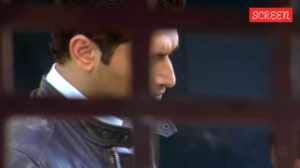The legend of Kazak: Pick-pocket, mason, writer and now professor
Last fortnight at Punjabi University in Patiala, Vice-Chancellor Dr S.S. Boparai asked Professor Kirpal Kazak to speak about the importance ...

Last fortnight at Punjabi University in Patiala, Vice-Chancellor Dr S.S. Boparai asked Professor Kirpal Kazak to speak about the importance of reaching and accessing primary sources in research.
Kazak narrated some incidents from his life to show how he could crack the myths about tribes. When Kazak talked about his life’s hardships and what he and his parents went through, many in the audience wiped their tears.
When it came to Boparai’s turn, the V-C, a reputedly tough man, just murmured ‘‘Respected Kazakji…’’. His voice cracked, he sat down, tears welling up in his eyes.
‘‘I realised that God had made me do something bigger than life, and I was moved. We, in the universities, prepare people to meet life; here was a man who came to the varsity after dealing with life,’’ Boparai told The Indian Express.
Professor Kazak’s CV is strange. His academic qualification is ninth grade (passed or failed, no one really knows). He ran away from home several times, spent years with pick-pockets, prostitutes and nomads. But among his friends are the who’s who of writers and he has published his works in books as well as several literary journals. And finally, he is a professor — though just for 52 days.
His career story is stranger. A renowned scholar met him at a fellow professor’s house in 1986, found he was a mason, and got him a mason’s job at the university. Years later, another one heard someone call out his name and found the mason was a top-notch writer, and helped to get him an assistant’s job in the literary studies department.
When a professional administrator took over as vice-chancellor last year, and found that the man was far bigger than his post, he made him a Professor, an honour which Kazak will enjoy for 52 days, before he turns 60.
‘‘Everyone’s life is made up of accidents, chances, fate,’’ says Kazak. Maybe not everyone’s, but his certainly is. Born in Sheikhupura, now in Pakistan, Kazak’s childhood was mired in poverty. After Partition, the family moved to Patiala.
‘‘My father tried to teach me masonry but it was difficult to work under the scorching sun. So I quit studies, fell into bad company and ran away from home with a gang of pick-pockets. After a botched up robbery bid, I split from the gang and joined some Naga sadhus at Hardwar, but left them after I found that some sadhus were paedophiles,’’ he says.
An accidental meeting in Hardwar with As-Haq Ahmed, a recognised Urdu writer, was a turning point. Since Ahmed too belonged to Sheikhupura and was a fellow Ramgarhia by caste, he took Kazak under his wings and taught him sculpting. It was Ahmed who put Kazak in touch with Sohrab Modi. For four years then, till 1959, Kazak was at Roop Tara Studio in Bombay, doing a little sculpting and making movie banners.
‘‘Painting a 40-foot moustache had its own romance. Ranjan, Mukri, Nirupa Roy, Sheikh Mukhtiar were big names,’’ he recalls. But Kazak himself lived among the nameless in Boribunder, with pick-pockets and prostitutes for company.
While in the city, he once took down dictation for Ahmed — a story about a girl — since the latter’s hand was injured.
Since Kazak too knew the girl, he objected to the way in which Ahmed ended the story. ‘‘It deviated from the real. So, out of anger, I wrote my own version. And someone sent it to Panj Dariya, an established Punjabi journal. Mohan Singh, who edited the journal, not only published it but also wrote back asking for more. Suddenly I was a writer,’’ he laughs.
By then, the city had lost its lure. He returned to live with the tribals and nomads in Punjab. In 1961, he saw a girl at a village mela, followed her and married her. Till 1969, Kazak lived with and wrote about the tribesmen. But it didn’t bring in much money. So he started working as a mason alongside.
Meanwhile, the grand man of Punjabi literature, Sant Singh Sekhon, who liked Kazak’s writings, inspired him to educate himself. And to earn some extra money, Kazak opened a roadside painter’s shop called the ‘‘Patiala Art Gallery’’.
‘‘Someone suggested that this kind of art work was in demand in Delhi, so I joined Glamorous Art Gallery in Connaught Place and met writer Imroze, whose office was on the top floor of the building,’’ he recalls.
This, in many ways, proved to be the stepping stone. Imroze to Amrita Pritam, Khushwant Singh, Jaswant Kanwal, Ajit Kaur — Kazak found himself among the creme de la creme of Punjab’s literary world. Back home, Dr Attar Singh translated some of his stories into English.
Amrita advised Kazak to focus on his special talent — meeting tribes and writing about them. A reference from Amrita to Mahashweta Devi helped Kazak penetrate into Ranchi’s Santhal tribes. He also moved among the tribes of Gujarat, Madhya Pradesh and Rajasthan.
By then, he had published five books whose stories were prescribed in the syllabi of Delhi University and Kurukshetra University. Kazak was now a known name among Punjabi literary circles. Some of his stories, thanks to translators, even made it to Soviet journals.
So when Kazak returned to his hometown of Patiala in the early ’80s, he was an established man of letters — but still a mason. And that’s how renowned Sikhism scholar Dr Jodh Singh prevailed on Bhagat Singh, Vice-Chancellor of the Punjabi University, Patiala, to employ him as — a regular varsity mason.
Not that it stopped Kazak from writing prolifically, his writings often finding their way into the Khoj Patrika, a prestigious research journal of not only the varsity but the entire country as far as Punjabi studies are concerned.
One day, Dr Rattan Singh Jaggi, a renowned author, was passing by and was shocked to find Kazak working as a mason. ‘‘He should have been playing with words, not working with bricks. The V-C was convinced to employ him as a folklore assistant,’’ recalls Jaggi. The post came with a rider: ‘‘produce a PhD-level work within a year and we will take you into the Literary Studies Department’’.
Kazak worked like a man possessed. During his research, Patiala policemen overheard him talking to tribesmen on their wireless sets. ‘‘I claimed to be a researcher but they found the old mason’s ID card in my pocket,’’ he says. Suspecting him to be a terrorist, the police put him through third-degree torture. But Kazak remained focussed on his goal. A year later, his work on Sikligars (a tribe) was ready.
‘‘It was better than even PhD dissertations,’’ says Dr Jaggi. So, Kazak joined the Literary Studies Department. It wasn’t long before he was editing Khoj Patrika. He was also the primary force behind Punjab Da Kitta-Kosh (Encyclopedia of Punjab’s Vocations) and is now working on an Encyclopedia of Culture.
Last August, when Dr Boparai took over as Vice-Chancellor he capped Kazak’s achievements with the decision to make him professor, a move that received an ecstatic welcome from the world of letters. So, on December 11, the mason became Professor Kazak.
And whatever roles he may don, all those who’ve known Kazak for years unanimously agree that he is the ‘‘finest human being’’.







- 01
- 02
- 03
- 04
- 05
























